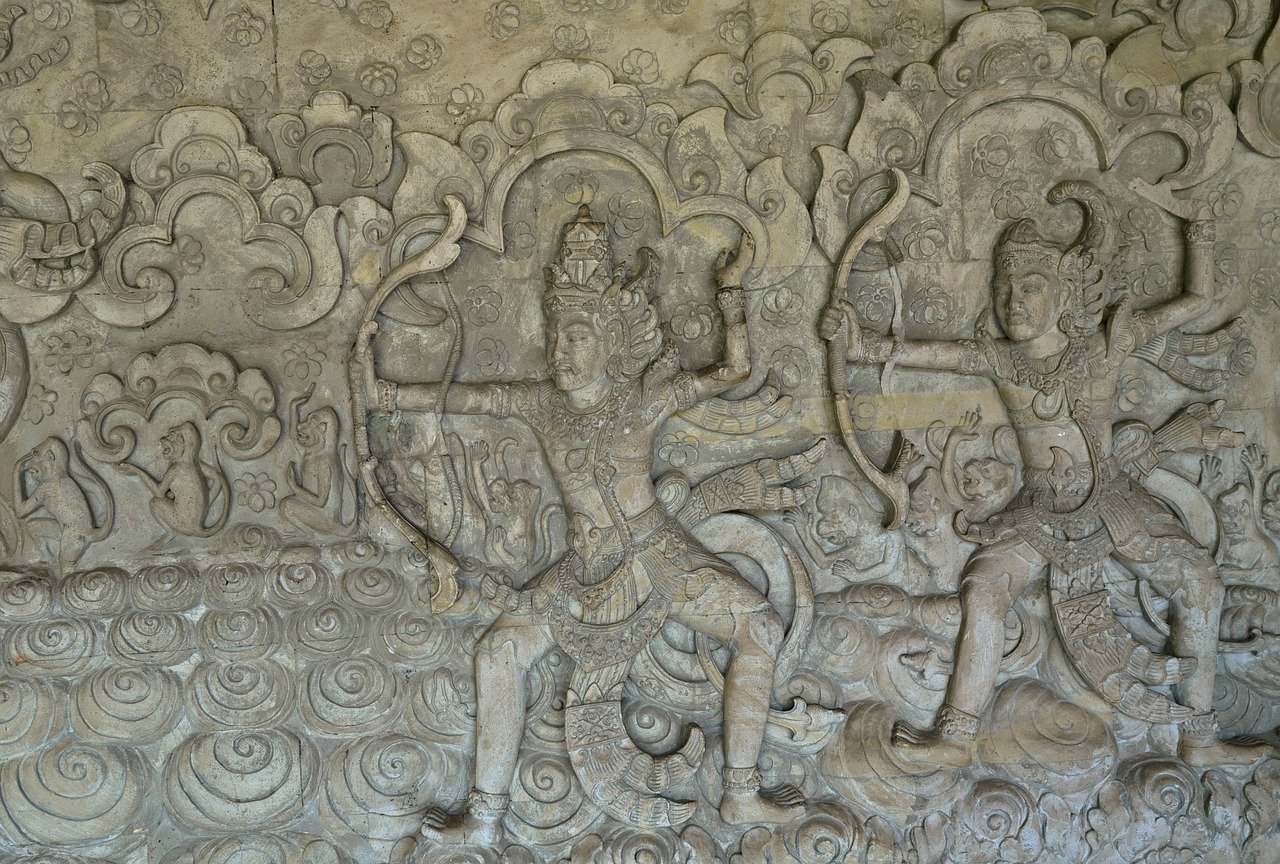The Influence of Ancient Astronomy on Modern Science
Exploring how ancient civilizations' astronomical observations and theories have shaped modern scientific understanding, technological advancements, and space exploration.

Ancient Astronomical Observations
Ancient astronomical observations form the bedrock of humanity's understanding of the cosmos. The Babylonians, Egyptians, and Greeks, among others, meticulously studied the movements of celestial bodies, laying the foundation for modern astronomy. Using rudimentary tools like astrolabes and sundials, these ancient civilizations tracked the stars, planets, and constellations with remarkable precision. Their observations not only helped them navigate the seas and mark the passage of time but also sparked a deep curiosity about the universe's mysteries.
The significance of these early observations cannot be overstated. By recording the cyclical patterns of celestial events, ancient astronomers were able to develop rudimentary calendars and predict astronomical phenomena like eclipses. Their keen observations also led to the creation of early astronomical models, such as the geocentric view of the universe popularized by Ptolemy. These models, though later proven incorrect, were crucial stepping stones in humanity's quest to understand the cosmos.
Moreover, ancient astronomers' keen eye for detail allowed them to map the stars and track their movements over centuries. The Babylonians, for instance, created intricate star catalogues and established the zodiac, a system still used in astrology today. Similarly, the Egyptians aligned their pyramids with celestial events, showcasing a deep connection between architecture and astronomy. These early observations not only served practical purposes but also laid the groundwork for future scientific endeavors.

Impact on Modern Astrology
Ancient astronomical observations and theories have left a profound impact on modern astrology, shaping the way we perceive celestial influences on human life and behavior. The intricate connection between ancient astronomy and astrology has paved the way for the development and evolution of astrological practices in contemporary society. By studying the movements of celestial bodies and interpreting their significance, ancient civilizations laid the foundation for the astrological principles that guide modern astrologers in understanding personality traits, predicting future events, and offering guidance.
Furthermore, the cultural and philosophical influence of ancient astronomy on astrology cannot be understated. The symbolic meanings attributed to planets, stars, and constellations in ancient times continue to resonate in modern astrological interpretations. The rich tapestry of myths and legends surrounding celestial bodies has been woven into the fabric of astrology, adding depth and meaning to astrological readings and horoscopes.
Astrology's impact on modern society extends beyond individual horoscopes and zodiac signs. It has found its way into various aspects of popular culture, influencing fashion trends, entertainment industries, and even political discourse. The enduring fascination with astrology reflects humanity's timeless quest to understand the mysteries of the universe and our place within it.
Moreover, the integration of ancient astronomical knowledge into modern astrology has sparked debates and discussions on the scientific validity of astrological practices. While some view astrology as a pseudoscience lacking empirical evidence, others find solace and guidance in its symbolic interpretations and predictive insights. The ongoing dialogue between skeptics and believers continues to shape the public perception of astrology and its role in contemporary society.
In conclusion, the impact of ancient astronomy on modern astrology transcends mere superstition and myth. It serves as a bridge between the scientific achievements of the past and the spiritual quest for meaning in the present. By delving into the depths of the cosmos and exploring the mysteries of the stars, astrology offers a unique lens through which we can contemplate our interconnectedness with the universe and the forces that govern our lives.

Foundations of Modern Astronomy
Exploring how ancient civilizations' astronomical observations and theories have shaped modern scientific understanding, technological advancements, and space exploration.
The foundations of modern astronomy can be traced back to the early observations and theories of ancient civilizations. Concepts such as geocentrism, the belief that the Earth is at the center of the universe, and heliocentrism, the idea that the Sun is at the center, laid the groundwork for the development of modern astronomical theories and discoveries. These early ideas, though sometimes inaccurate, sparked a curiosity and drive for exploration that continues to drive scientific progress today.
Ancient astronomers like the Greeks and Babylonians made significant contributions to the field of astronomy. They developed mathematical models to predict celestial events, such as eclipses and planetary movements, with impressive accuracy given the limited technology available at the time. These early observations and calculations formed the basis for the scientific methods used in modern astronomy.
Furthermore, the transition from a geocentric to a heliocentric model of the solar system, championed by figures like Copernicus and Galileo, marked a pivotal moment in the history of astronomy. This shift in perspective revolutionized our understanding of the cosmos and paved the way for future astronomical discoveries.
Ancient astronomical instruments, such as the astrolabe and sundial, played a crucial role in advancing observational techniques and data collection. These tools, though rudimentary compared to modern technology, were instrumental in mapping the night sky and tracking celestial movements. Their legacy lives on in the sophisticated instruments used by astronomers today.
The cultural and philosophical influence of ancient astronomy cannot be overstated. Beliefs about the cosmos and celestial bodies have shaped human societies, religious practices, and philosophical thought throughout history. The alignment of ancient structures like Stonehenge with astronomical events reflects the deep connection between astronomy, architecture, and cultural practices.
As we look to the future, the enduring legacy of ancient astronomy continues to inspire scientific inquiry and technological innovation. By studying the astronomical achievements of our ancestors, we gain a deeper appreciation for the vastness and complexity of the universe, fueling our curiosity and driving us to explore beyond the boundaries of our planet.
- What role did ancient astronomy play in the development of modern scientific methods?
- How did the transition from geocentrism to heliocentrism impact our understanding of the solar system?
- What are some examples of ancient astronomical instruments and their contributions to modern astronomy?
- How has ancient astronomy influenced cultural practices and philosophical thought?
- What potential do ancient astronomical discoveries hold for inspiring future innovations in the field?

Ancient Astronomical Instruments
Exploring how ancient civilizations' astronomical observations and theories have shaped modern scientific understanding, technological advancements, and space exploration.
Ancient astronomers utilized a variety of instruments to study celestial bodies and phenomena. One of the most notable tools was the astrolabe, a complex device used for measuring the altitude of stars and planets. This instrument allowed astronomers to determine their position in the sky accurately. Additionally, the sundial was widely used by ancient civilizations such as the Egyptians to track the movement of the sun and measure time based on the sun's shadow.
These instruments played a crucial role in early astronomical observations and laid the foundation for modern scientific instrumentation. The astrolabe, with its intricate design and precise measurements, demonstrated the advanced knowledge and mathematical skills of ancient astronomers. Similarly, the sundial's simple yet effective method of tracking time based on the sun's position influenced the development of more sophisticated timekeeping devices.
Moreover, ancient astronomers also employed water clocks to measure time during the night when the sundial was not functional. These devices used the flow of water to mark the passage of time, providing a continuous and reliable way to track hours and minutes. The invention of water clocks showcased the ingenuity of early astronomers in creating innovative solutions to practical challenges.

Cultural and Philosophical Influence
The ancient study of astronomy not only impacted scientific knowledge but also left a profound mark on cultural practices and philosophical beliefs. Civilizations like the Babylonians, Egyptians, and Greeks viewed the stars and celestial bodies as more than just physical entities; they attributed divine significance and symbolic meanings to them.
These astronomical beliefs intertwined with cultural rituals, religious ceremonies, and societal structures. For example, the alignment of temples and monuments with celestial events reflected a spiritual connection between the earthly realm and the heavens. The movements of the stars and planets were often interpreted as omens, guiding decisions in governance, agriculture, and personal life.
Moreover, the concept of cosmology, the study of the universe's origin and structure, influenced philosophical thought. Ancient astronomers pondered the nature of existence, the order of the cosmos, and humanity's place in the vast expanse of space. Their contemplations on the celestial sphere sparked debates on the fundamental questions of life, purpose, and the interconnectedness of all things.
As astronomy evolved into a science, these cultural and philosophical influences persisted, shaping art, literature, and intellectual discourse. The enduring legacy of ancient astronomical beliefs serves as a reminder of our enduring fascination with the cosmos and the enduring quest for understanding our place in the universe.

Navigation and Timekeeping
Exploring how ancient civilizations' astronomical observations and theories have shaped modern scientific understanding, technological advancements, and space exploration.
Ancient civilizations heavily relied on astronomy for navigation, timekeeping, and the development of calendar systems. By observing the movements of celestial bodies, early astronomers were able to determine directions, measure time, and establish calendars that guided various aspects of society.
Ancient sailors, such as the Phoenicians and Polynesians, used the positions of stars and planets to navigate vast oceans, allowing them to explore new territories and engage in trade with distant lands. The ability to read the night sky accurately was crucial for their survival and success in maritime endeavors.
Moreover, ancient cultures like the Mayans and Egyptians developed sophisticated calendar systems based on astronomical observations. By tracking the motions of the sun, moon, and stars, they created calendars that aligned with agricultural cycles, religious ceremonies, and societal events. These calendars not only facilitated timekeeping but also played a significant role in organizing communal activities and predicting natural phenomena.
The utilization of astronomical knowledge for navigation and timekeeping highlights the practical applications of ancient astronomy in everyday life. It demonstrates how the study of celestial bodies not only expanded human understanding of the universe but also directly influenced the development of essential tools and systems that shaped ancient civilizations.
1. How did ancient civilizations use astronomy for navigation and timekeeping?
2. What role did celestial observations play in the development of calendar systems?
3. Which ancient cultures were known for their advancements in astronomical instruments?
4. How has modern technology evolved from ancient astronomical practices?

Architectural Alignments
Architectural alignments in ancient civilizations, such as the remarkable structures of Stonehenge and the Pyramids, showcase the profound integration of astronomy into architectural design and cultural practices. These structures were not merely buildings but rather sophisticated astronomical observatories, meticulously aligned with celestial events like solstices and equinoxes. The alignment of Stonehenge with the summer solstice, for example, demonstrates the precise astronomical knowledge and engineering prowess of its creators. Similarly, the Pyramids of Giza exhibit alignment with the cardinal points and are believed to have served as monumental markers of celestial phenomena. These architectural marvels stand as testaments to the deep connection between ancient societies and the cosmos, highlighting the importance of astronomy in shaping not only scientific understanding but also architectural ingenuity and cultural identity.

Continued Relevance and Future Prospects
Exploring how ancient civilizations' astronomical observations and theories have shaped modern scientific understanding, technological advancements, and space exploration.
Ancient astronomy continues to hold significant relevance in the realm of modern science and technology. The foundational knowledge and insights gained from early astronomical observations have paved the way for numerous advancements and innovations in various fields.
One of the key aspects of ancient astronomy that continues to influence modern science is the concept of celestial mechanics. The understanding of planetary motion, celestial bodies, and the laws governing the universe, as developed by ancient astronomers, forms the basis of modern astrophysics and cosmology.
Moreover, the technological innovations and instruments devised by ancient astronomers, such as the astrolabe and sundial, have laid the groundwork for the sophisticated tools used in contemporary astronomical research. These historical instruments have inspired the design and development of modern telescopes, satellites, and space probes, enabling humanity to explore the cosmos with unprecedented precision.
Furthermore, the cultural and philosophical impact of ancient astronomy continues to resonate in modern society. The connection between celestial phenomena and human existence, as perceived by ancient civilizations, has influenced art, literature, and even the ethical considerations surrounding space exploration and extraterrestrial life.
Looking towards the future, the legacy of ancient astronomy holds immense potential for inspiring new discoveries and breakthroughs in the field of astrophysics. By studying the methods and insights of early astronomers, scientists can gain fresh perspectives on the universe and unlock hidden mysteries waiting to be unraveled.
In conclusion, the influence of ancient astronomy on modern science is profound and enduring. As we continue to build upon the foundations laid by our predecessors, the insights and wisdom gleaned from millennia of astronomical observations will guide us towards new frontiers of knowledge and exploration.
Frequently Asked Questions
- What were the main astronomical observations made by ancient civilizations?
Ancient civilizations such as the Babylonians, Egyptians, and Greeks made significant observations of celestial phenomena like the movements of the stars, planets, and constellations. They developed early models to explain these observations and laid the foundation for modern astronomy.
- How did ancient astronomy influence modern astrology?
Ancient astronomical beliefs and practices heavily influenced the development of astrology in contemporary society. The zodiac signs, planetary alignments, and celestial events observed by ancient astronomers continue to shape astrological interpretations and predictions today.
- What were the key astronomical instruments used by ancient astronomers?
Ancient astronomers utilized tools such as the astrolabe, sundial, and celestial globe to track the movements of celestial bodies and measure time. These instruments were crucial for navigation, timekeeping, and the development of early calendars.
- How did ancient astronomy impact cultural and philosophical beliefs?
Ancient astronomical beliefs and cosmological theories influenced various aspects of culture, religion, and philosophy throughout history. The alignment of structures like Stonehenge with celestial events reflects the integration of astronomy into architectural design and cultural practices.
- Why is ancient astronomy still relevant in modern science?
Ancient astronomy laid the groundwork for modern scientific understanding and technological advancements. Concepts like geocentrism and heliocentrism continue to inspire new discoveries and innovations in the field of astronomy, showcasing the enduring legacy of ancient observations.



















